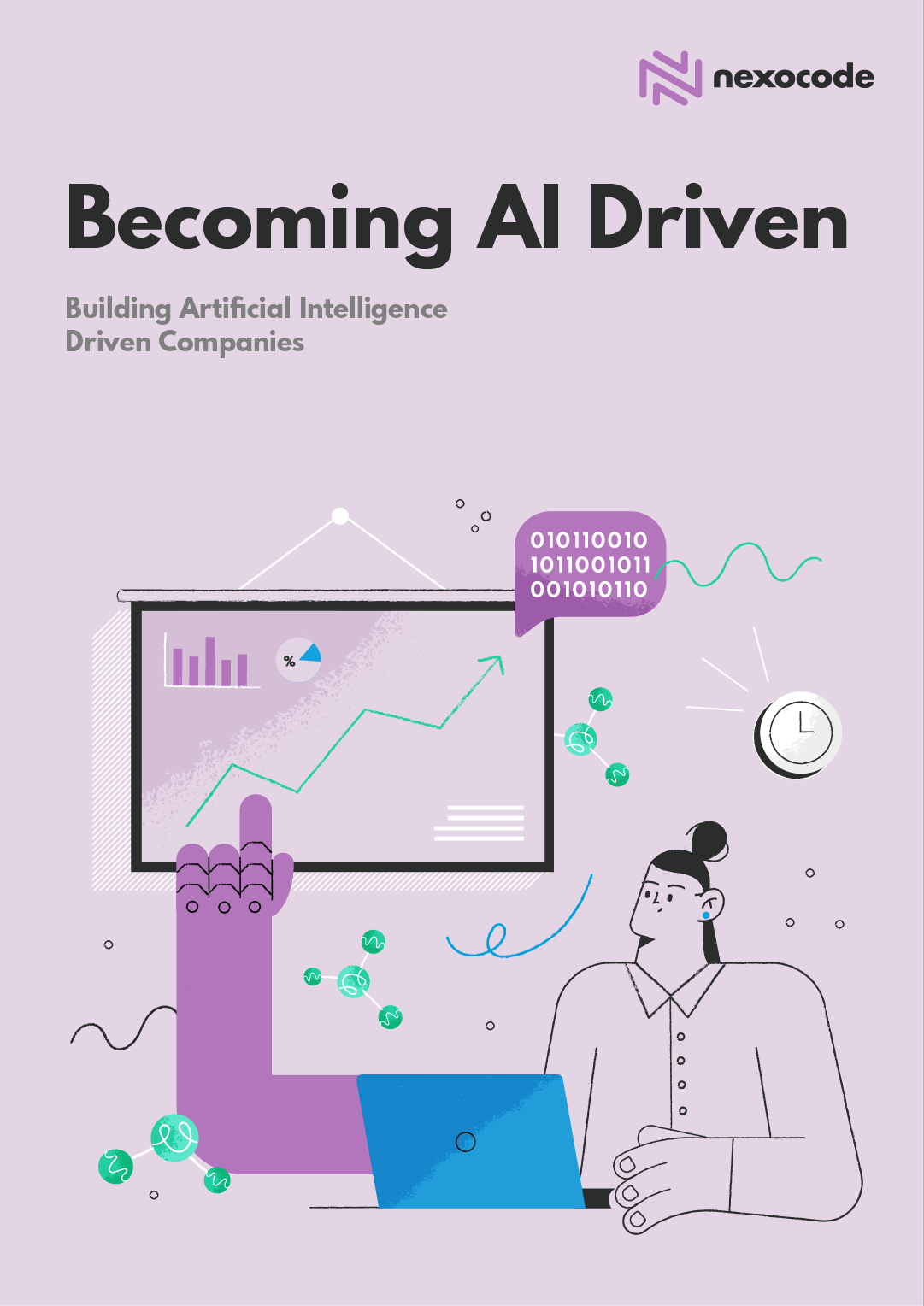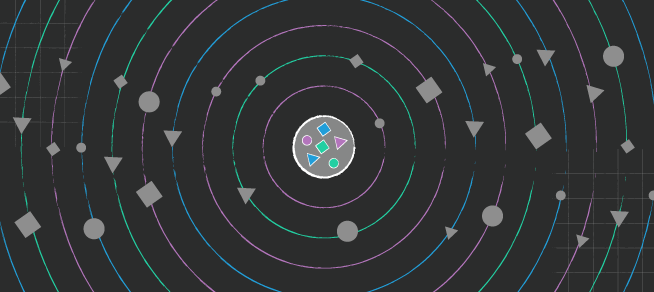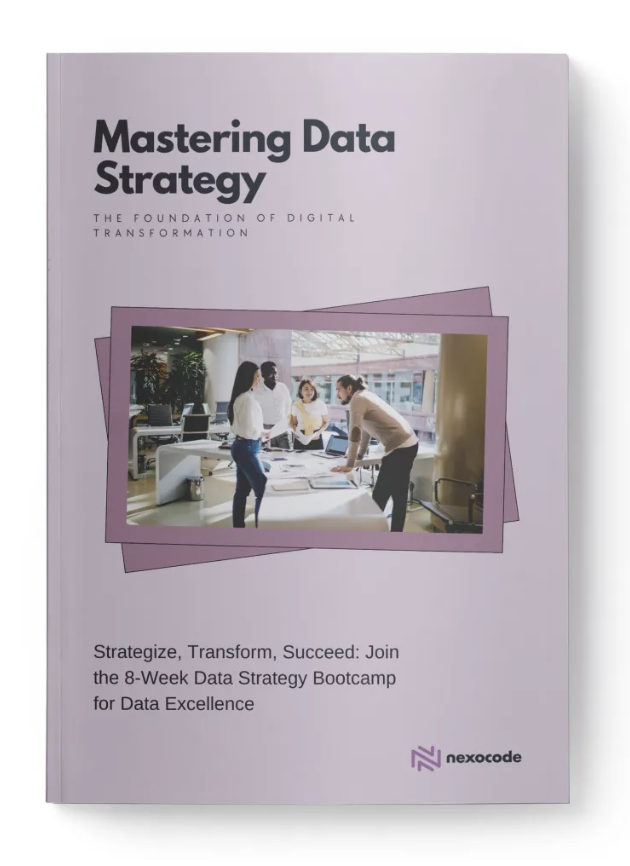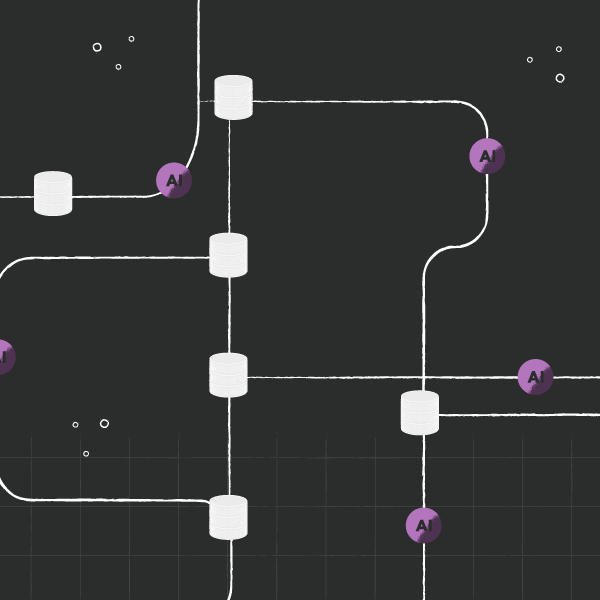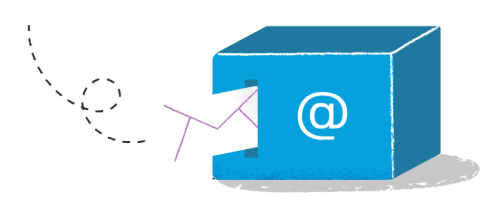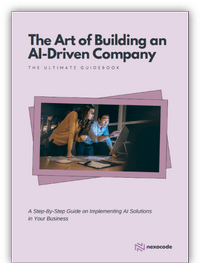Are you harnessing the full potential of your corporate data? How do you ensure that your chatbot is not just a repository of outdated information but a dynamic source of current insights? In the rapidly evolving world of AI, are you leveraging the most cutting-edge technologies to enhance your knowledge management?
These questions are more pertinent than ever in the era of Large Language Models (LLMs) like GPT-4 and ChatGPT, where the principle of ‘garbage in, garbage out’ profoundly influences outcomes. As businesses navigate through a deluge of corporate data, often confined within firewalls and not readily accessible on the public internet, the need to effectively utilize LLMs becomes increasingly crucial.
Enter generative AI and its transformative impact on enterprise knowledge bases. By tapping into the power of retrieval-augmented generation (RAG) techniques, businesses can revolutionize their approach to data utilization. Imagine a world where your chatbots are not just automated responders but intelligent agents equipped with the latest advancements in AI, capable of accessing your company’s most valuable data in real-time and providing accurate, natural language responses. This vision is rapidly becoming a reality, enabling enterprises to unlock new possibilities and redefine the capabilities of their AI-driven solutions.
Maximize your chatbot’s potential by integrating a sophisticated chatbot knowledge base. This article demystifies how LLMs and RAGs can be combined to improve your chatbot’s interactions, ensuring accurate, swift, and context-aware answers. We’ll show you the crucial steps to supercharge your AI chatbot with a dynamic chatbot knowledge base, fulfilling the pressing demand for intelligent and efficient customer service solutions.
TL;DR
• Internal knowledge bases play a crucial role in organizations, aiding in decision-making, problem-solving, and centralizing organizational know-how.
• The integration of LLMs and RAGs significantly improves chatbot interaction by enabling access to external knowledge bases, generating more informed responses, and enhancing their context and accuracy. LLMs and RAGs’ integration addresses key issues like outdated training data and extrapolation, ensuring chatbots deliver current and reliable information.
• Embedding models and vector databases are essential components, transforming text into vector representations for efficient retrieval and response generation.
• Self-hosting LLM and RAG systems offers greater control, security, and cost-efficiency, especially crucial when handling sensitive data.
• Accuracy and reliability in chatbot responses are vital, mitigating model hallucinations and incorporating a Human-in-the-Loop process ensures ethical decision-making and enhanced accuracy.
• Organizational efficiency benefits from chatbots accessing internal knowledge bases, facilitating faster decision-making and problem-solving, preserving knowledge, and supporting remote work through centralized information.
• Evaluating chatbot performance using specific metrics is crucial, and periodic improvements driven by these insights are necessary to maintain high-quality customer service and internal assistance.
• For businesses looking to stay ahead in the AI-driven world, nexocode’s expertise in building custom NLP systems and LLM-based solutions is invaluable.
Contact nexocode AI experts to implement cutting-edge, AI-driven chatbot solutions tailored to your needs.
Chatbots, once simple rule-based systems, have come a long way. Their evolution, catalyzed by advancements in artificial intelligence, has seen them morph into sophisticated conversational interfaces. No longer do chatbots deliver rigid, pre-programmed responses; they now comprehend and address diverse user intents, offering contextually relevant responses. The integration of knowledge bases with chatbots, transforming them into knowledge bots, has further enhanced their capabilities, enabling instant access to structured information and fundamentally changing how customer queries are addressed.
These advancements have brought a myriad of benefits to customer support teams. By utilizing various sources such as FAQs, help centers, and product catalogs, chatbots are able to produce coherent responses, thereby assisting teams during high volumes of support requests without increasing agent workload. Furthermore, by managing repetitive and low-complexity inquiries, these AI chatbots enable human support representatives to concentrate on more intricate issues, improving overall customer service experiences.
Gone are the days of rigid, pre-programmed chatbot responses. Today’s AI chatbots are conversational architects, transforming customer support with nuanced understanding and contextually relevant answers.
Integrating LLMs and RAGs: A New Era in AI Chatbot Technology
The evolution and popularity of LLMs are turning the heads of decision-makers who are looking forward to implementing these kinds of solutions within their own organizations. But as impressive chat solutions like ChatGPT may be on the first lookout, they also pose a significant amount of implications that prolong industry adoption of production-ready solutions.
The challenges with Large Language Models in knowledge-based applications primarily revolve around two significant issues:
- Outdated training data: The data used to train LLMs, like ChatGPT, often becomes quickly outdated. For instance, as of this writing, ChatGPT’s understanding of the world only extends up to April 2023 (training data cutoff), with some functionalities like Browse with Bing and GPT-4V offering additional context to mitigate this limitation.
- Tendency to extrapolate: LLMs are prone to filling in knowledge gaps by extrapolating, leading them to confidently present false yet believable statements. This phenomenon, known as hallucination, occurs when the model encounters a gap in its training data and attempts to generate a plausible response despite the lack of accurate information.
The integration of Large Language Models with Retrieval-Augmented Generation represents a groundbreaking advancement in AI chatbot technology. This innovative approach not only leverages the extensive knowledge base of LLMs but also enriches it with the latest, most reliable external information. By combining pre-trained LLMs with an external data source or an existing knowledge base using techniques like dense passage retrieval (DPR), the resulting AI chatbots are able to:
- Access authoritative and up-to-date knowledge beyond their original training data, ensuring responses are not just generated based on statistical word relationships but grounded in factual, current content.
- Generate responses that are not only informed but also verifiable, with RAG providing the ability to cite sources, thereby enhancing user trust in the accuracy of the information provided.
- Enrich AI-generated content with additional context and accuracy, leading to smarter, more context-aware interactions that are tailored to specific domains and user needs.
RAG works by converting both the knowledge base and the user’s query into numerical representations using embedding language models, a process that captures the essence and relationships of words and sentences in a quantifiable form. When a user poses a question, RAG retrieves relevant information from predefined sources, such as customer documentation or internal databases, which is then presented alongside the query to the LLM. This allows the LLM to leverage both its internal training data and the external, context-specific information to generate better, more accurate responses.
Key Advantages of RAG Integration:
- Cost-efficiency: RAG implementation is more cost-effective than training foundational models from scratch, offering a significant advantage in terms of resource allocation.
- Easy updates: The knowledge base can be updated without the need to retrain the entire model, allowing for quick adaptation to changing information landscapes.
- Reduced risk of hallucinations: Generative AI models often create responses disconnected from reality, known as hallucinations. By integrating RAG, these models gain access to external knowledge bases and documents enhancing their ability to generate responses rooted in factual information.
- Trustworthiness: By citing sources in its responses, RAG enhances the credibility and reliability of the chatbot’s answers, fostering user trust and confidence.
The integration of LLMs and RAGs in AI chatbot technology marks a significant evolution in the field, offering enhanced performance, efficiency, and accuracy. This approach not only makes chatbots smarter and more responsive but also transforms them into essential components of a knowledge-driven digital ecosystem.
In the realm of AI, the fusion of Large Language Models with Retrieval-Augmented Generation is not just an upgrade, it’s a revolution – empowering chatbots with up-to-date, accurate, and verifiable knowledge.
Importance of Internal Knowledge Bases for Organizations
Internal knowledge bases play a vital role in businesses and organizations. Serving as a repository of essential information, they contribute to operational efficiency and organizational learning. When integrated with a chatbot, they significantly enhance the efficiency of accessing and utilizing the internal knowledge base, thereby facilitating decision-making and problem-solving processes within the organization.
Moreover, internal knowledge bases contribute to knowledge preservation by centralizing organizational know-how. This facilitates:
- keeping internal knowledge base and know-how secure and private
- consistent employee training
- equitable sharing of expertise among team members
- enabling chatbots to answer questions more effectively by drawing from a centralized source of information.
In addition, a centralized and accessible knowledge base facilitates remote work by providing employees with the resources they need regardless of location, thereby maintaining business continuity.
Knowledge Base with LLM, RAG, and Chatbot Integration - How it Works?
The process of integrating a knowledge base with an LLM-powered chatbot involves a series of steps, beginning with determining the type of data the chatbot will access and then breaking down the knowledge base for integration with the LLM and creating a RAG system.
Loading & Breaking Down Internal Documents for RAG System Construction
The construction of an RAG system necessitates the following steps:
- Document loading
- Breaking down internal documents into smaller, distinct chunks of information
- Ensuring that key information and entities are identified
The document chunking process impacts the efficiency of LLMs by dividing extensive texts into smaller, manageable segments. This enhances content relevance when embedding into a vector database, enabling more precise comparisons and associations of content segments with user queries, resulting in targeted and relevant responses. Let’s take a detailed look on this initial process:
Document loading
This stage involves importing the documents into the system. It encompasses extracting text from various formats, parsing, and formatting to ensure data consistency and cleanliness. This step is vital for preparing the documents for the subsequent splitting process. It involves handling a range of document types and formats, ensuring that the text extracted is accurate and usable for the AI model.
Document splitting
After loading, the documents are segmented into smaller, manageable chunks. This step is key to the RAG system’s efficiency, as it determines how the LLM processes and interacts with the data. Splitting strategies vary based on content requirements. Some methods focus on fixed-size chunking, dividing documents into uniform segments, while others employ content-aware chunking. Content-aware chunking is more sophisticated, recognizing the structure and thematic breaks within the document, thereby splitting the text in a way that preserves the contextual integrity of the information. This segmentation ensures that key information and entities within the documents are effectively identified and organized. This process facilitates more accurate content comparisons and associations, aligning content segments with user queries more effectively. The result is a more targeted and relevant response from the chatbot, driven by a well-organized and efficiently processed knowledge base.
Embedding Model
In RAG technology, the embedding model transforms text into vector embeddings using models like Word2Vec, GloVe, BERT, RoBERTa, and ELECTRA. This process is key for chatbots to understand and respond to human language and access relevant information seamlessly:
- Text embedding: Chunks of text are converted into embeddings, capturing the semantic and syntactic essence of language.
- Vector creation: These embeddings represent text as multidimensional vectors, essential for understanding language context and meaning.
- Embedding tools: Options include OpenAI’s embeddings model, LangChain, LlamaIndex, or custom generation with SentenceTransformers.
Through these embeddings, chatbots gain the ability to analyze language nuances and generate contextually relevant responses.
Vector Database
In AI technology, a vector database functions as an efficient repository for indexing and storing vector embeddings, facilitating swift retrieval and similarity searches. It is integral to accelerating AI applications by facilitating the efficient storage and retrieval of high-dimensional vectors, which are mathematical representations of data points.
After transforming document chunks into vector space, these embeddings are stored in a vector store - a specialized database for vector searches and management, here are some notable ones:
- FAISS (Facebook AI): Efficiently handles large vector collections, optimizing memory use and query speed.
- SPTAG (Microsoft): Offers a variety of search algorithms, balancing precision and speed.
- Milvus: An open-source vector database known for rapid vector retrieval in extensive datasets, compatible with PyTorch and TensorFlow.
- Chroma: An in-memory vector database ideal for LLM applications, offering cloud and on-premise deployment flexibility.
- Weaviate: A versatile platform for managing data, capable of storing vectors and objects for mixed search techniques.
- Elasticsearch: Suitable for large-scale applications, it efficiently stores and searches high-dimensional vectors.
- Pinecone: A cloud-based, managed vector database, ideal for large-scale ML applications, supporting real-time data analysis and a wide range of integrations.
The right combination of text embedding and vector store is crucial for effective document chunk indexing and quick retrieval in RAG models.
Vector databases in conjunction with large language models store the vector embeddings resulting from the model’s training. This enables the database to conduct similarity searches and identify the most suitable match between a user’s prompt and a specific vector embedding, thereby enhancing the chatbot’s ability to respond to queries. The next section discusses managing queries and retrieving relevant chunks.
Vectorize Question
In AI chatbots, question vectorization converts input questions into vector representations, usually through methods like embedding or vectorization. This transformation is crucial for enabling the matching of the question with stored vectors in a vector space, which is essential for identifying appropriate answers.
The techniques used for vectorizing questions in LLM integrated chatbots involve:
- Organizing the knowledge base
- Converting questions to LLM-specific embeddings
- Storing these vector embeddings
- Retaining the original text
- Preparing the vectors for efficient retrieval and response generation.
Retrieve Relevant Document Chunks
Employing retrieval-augmented generation systems is involved in the retrieval of relevant document segments. These systems retrieve the most pertinent context from a data source and present it as segments that are deemed to be the most relevant to the user’s query.
The retrieval process in RAG systems begins when a user’s query is converted into a vector using the same embedding model as for document indexing. This semantic transformation enables a meaningful comparison with document chunk vectors in the vector store. The goal is to identify relevant chunks that correspond closely to the user’s query.
Key retrieval methods:
- Similarity search: Identifies documents similar to the query based on metrics like cosine similarity.
- Maximum marginal relevance (MMR): Ensures diversity in retrieved results by avoiding redundancy and focusing on relevance.
- Threshold-based retrieval: Sets a similarity score threshold, returning only documents exceeding this score.
- LLM-aided retrieval: Splits queries into search and filter terms using LLMs, combining pre-trained model power with conventional retrieval methods for enhanced accuracy.
- Compression: Aims to reduce the size of indexed documents or embeddings, focusing the final response on crucial aspects while balancing storage efficiency and retrieval speed.
Each retrieval method has its unique advantages and applications, ensuring that the chatbot efficiently locates specific entities or phrases within the text, maintaining relevance and accuracy in responses.
Generate Answer (Question + Retrieved Document Chunks + Prompt to Answer the Question)
After retrieving the pertinent document chunks, the chatbot proceeds to generate an answer to the question or query. It does this by passing the question and the retrieved context text chunks to the Large Language Model via a prompt and instructs the LLM to utilize only the provided context for generating the answer.
In the final phase of integrating a chatbot with LLM and RAG systems, the key task is to generate an answer using the retrieved document chunks and the user’s question. This process involves constructing a context and prompt for the Large Language Model, guiding it to produce responses that are both relevant and insightful.
- Question vectorization: Question vectorization is crucial in response generation as it transforms the question into a numerical vector, allowing machine learning models to interpret it. This process helps the system understand the semantic meaning of the question and retrieve relevant information from the knowledge base, or generate a response based on the vectorized query.
- Context prompt creation: This step involves compiling the relevant document chunks into a context window and formulating a prompt. The prompt, structured as a question or statement, directs the LLM to focus on the provided context for answer generation.
- Prompt processing and response generation: Regardless of the method used, the LLM processes the prompt and generates a response based on its understanding. This step is crucial in delivering answers that are not only relevant but also align with the user’s query and the context provided by the document chunks.
- Ensuring insightful responses: The choice of method for question-answering provides flexibility and customization in retrieving and distilling answers from documents. Selecting the appropriate method is essential to enhance the accuracy and relevance of the answers provided by the LLM.
Building an AI Chatbot with a Custom Knowledge Base
The construction of a chatbot with a custom knowledge base boosts not only the efficiency of accessing and using the knowledge base, but it also elevates customer service experiences. The process involves:
- Integrating the chatbot with the knowledge base platform
- Regularly updating the database
- Designing a user interface that will support user asks and ease the conversations as well as knowledge base browsing
- Evaluating the chatbot’s performance.
The integration of LLM with a knowledge base platform involves the following steps:
- Developing a Gen AI implementation strategy
- Engaging with stakeholders to gather requirements
- Setting up the LLM-powered application
- Utilizing configuration management tools
- Implementing knowledge retrieval mechanisms
- Refining for domain-specific knowledge
This integration ensures that the chatbot’s responses are not only current and precise but also contextually appropriate, leveraging the capabilities of generative AI systems.
Instantly Updating Knowledge Base Articles
The frequent updating of knowledge base articles has a notable impact on boosting the performance of AI chatbots. This not only ensures that the chatbot is up-to-date with the latest information but also improves its ability to deliver accurate and relevant responses to user queries.
The process involves:
- Integrating chatbots with knowledge base platforms
- Conducting regular content reviews and updates
- Creating new content to fill information gaps
- Optimizing existing content
- Maintaining content that is current with the latest product version
- Ensuring articles are well-structured and concise
- Utilizing anchor links in lengthy articles
- Regularly refining the knowledge base to align with users’ needs
Practical Applications and Use Cases of Chatbots with Custom Knowledgebase
The fusion of LLMs and RAGs has enabled AI chatbots, powered by automation software, to be applied across a broad spectrum of domains, such as customer service and internal document querying.
Let’s explore some practical applications and use cases of chatbots with custom knowledge bases.
Improving Customer Service
Chatbots with custom knowledge bases can significantly enhance customer service. They leverage extensive information within articles to answer customer questions, significantly improving response times and alleviating the workload of support teams.
These chatbots are adept at managing a range of customer service tasks, including:
- handling customer inquiries
- offering ongoing support
- swiftly and efficiently resolving issues
- enabling human support agents to focus on more intricate and personalized interactions, thus acting as a valuable support team
This not only enhances the customer experience by addressing customer questions but also increases customer satisfaction. Every time a new problem arises in the customer experience path and a solution is provided by a human agent the solution can be immediately added to the knowledge base chatbot and instantly solve any similar problems with accurate answers from now on.
Querying Internal Documents on Manufacturing/Sales/Best Practices
Chatbots are also capable of efficiently retrieving and processing information from internal documents related to various organizational operations. They can be utilized to retrieve best practices from internal documents within an organization, facilitating decision-making and problem-solving processes.
The process for querying internal documents related to sales may involve the following steps:
- Identify the specific information needed.
- Determine the appropriate database or document repository.
- Formulate the query using relevant keywords and search operators.
- Execute the query.
- Review the search results.
- Refine the query if necessary.
Creating a Knowledge Hub for Organizational Data
AI chatbots can also be instrumental in creating a knowledge hub for organizational data. They enhance the accessibility, efficiency, and accuracy of the knowledge hub, leading to increased employee engagement and improved overall results.
A proficient knowledge hub within an organization should encompass the following features:
- User-friendliness
- Robust search capabilities
- Reporting and built-in analytics
- Customization options
- Mobile app support
- Collaboration features
- Integration with third-party tools
- A straightforward interface
Crucially, it should be centralized and easily accessible to cater to the organization’s requirements.
To achieve optimal results, it’s critical to both evaluate and enhance chatbot performance. While leveraging LLMs and RAGs in building AI chatbots can significantly enhance their capabilities, it’s important to regularly monitor and assess the performance of these chatbots using various metrics and strategies for improvement.
Metrics for Customer Service Chatbots
In assessing the performance of customer service chatbots, critical metrics to consider include:
- Average conversation length
- Total conversations
- Engaged users
- Goal completion rate
- Fallback rate
- Bounce rate
- Frequently asked questions
- User satisfaction rate
- Response time
Customer satisfaction with chatbots can be effectively measured through:
- Surveys
- Ratings
- Feedback
- Sentiment analysis
- Engagement rate
- Satisfaction score
- Conversation duration
Such metrics provide insights into the chatbot’s reach and the level of engagement users have with it.
Metrics for Internal Chatbot Usage
Internal chatbots’ performance is gauged using specific metrics like:
- Interaction rate
- Non-response rate
- Total users
- Engaged users
- New users
- Chat volume or sessions
- Conversation duration
- Interactions
- Fallback rate
- Bounce rate
- Frequently asked questions
- Goal completion rate
The quantity of user interactions has an impact on chatbot performance metrics, including the total number of unique users, user engagement rate, and engagement rate. These metrics provide insights into the chatbot’s reach and the level of engagement users have with it.
Best Practices for Building Knowledge Base Chatbots
A systematic approach is required to build a knowledge base chatbot. By putting into practice a set of best practices, one can ensure the effective and efficient development of a chatbot that provides an appropriate answer, accurate and context-aware responses.
Preparing the Knowledge Base
The initial step in constructing a chatbot is a crucial one - preparing the knowledge base. This involves:
- Integrating the chatbot with the knowledge base platform
- Training the chatbot with the custom knowledge base
- Identifying answerable questions
- Determining the optimal structure
- Implementing cost-efficient mechanisms for the solution.
Ensuring that the knowledge base is well-structured and up-to-date not only improves the chatbot’s ability to deliver accurate and relevant responses but also enhances the overall user experience. Incorporating structured data can help segment large documents into smaller, manageable sections to facilitate efficient processing.
Setting Parameters for Chatbot Answers
To keep interactions focused and appropriate, it’s necessary to set parameters for chatbot responses. Defining parameters for chatbot responses involves considering the model, adjusting response randomness using temperature, and setting the maximum token generation limit. These parameters have a direct impact on the performance and response behavior of AI chatbots, as they can enhance accuracy and the ability to learn from data.
Self-Hosting LLM and RAG System
In chatbot technology, self-hosting an LLM involves operating a large language model chatbot on internal infrastructure or servers, rather than relying on external platforms or services. Self-hosting Large Language Models and Retrieval-Augmented Generation systems is a strategic decision for businesses, particularly when handling sensitive or voluminous customer data. This approach has several critical aspects:
- Security and performance: Self-hosting LLMs ensures enhanced data security and optimal performance, as sensitive customer data remains within the organization’s network.
- Control and cost-efficiency: By self-hosting, companies gain greater control over their AI solutions and can achieve cost savings, especially at scale, compared to relying on third-party API services.
- Customization and scalability: Self-hosted systems allow for customization and scalability, enabling businesses to fine-tune LLMs to their specific needs and expand capacity as required.
- Technical expertise and infrastructure: Implementing self-hosted LLM and RAG systems requires considerable technical expertise and robust infrastructure. Businesses must be prepared to invest in the right talent and technology.
- Regulatory compliance: Self-hosting can also be a more compliant solution for businesses concerned about legal and data privacy regulations, providing more control over how customer data is processed and stored.
Self-hosting LLM and RAG systems isn’t just about control; it’s a strategic move towards enhanced security, performance, and a tailored AI experience that respects the uniqueness of your business data.
Ensuring Accuracy and Reliability in Chatbot Responses
To achieve optimal results, it’s critical to ensure accuracy and reliability in chatbot responses. High-quality data enables chatbots to effectively meet customer needs and enhance the overall user experience. It has a direct influence on the performance of chatbot models, and thus, maintaining consistency in the knowledge base enables the chatbot to deliver dependable and accurate responses.
Having a Human-In-The-Loop Process and Not Relying 100% on AI Chatbot for Crucial Processes
To ensure accuracy and reliability, incorporating a Human-in-the-loop (HITL) process in AI chatbot operations is vital. This involves integrating a human agent into AI capabilities to ensure ethical decision-making, enhance accuracy, and ultimately lead to improved overall results.
A crucial aspect of this process is training with uncertain labels, which enhances the chatbot’s ability to handle uncertain feedback.
Anticipating Advances in LLM and RAG Capabilities - Reach Out to Nexocode Experts
Given the rapid evolution of the field of AI, it’s vital for businesses and organizations to keep abreast of the latest advancements in LLM and RAG technology. By building a robust AI chatbot with a custom knowledge base, organizations can deliver accurate and context-aware responses to customers and employees, enhancing overall efficiency and productivity.
Keeping up with these advancements can be a complex task. That’s where the experts at Nexocode come in. With a deep understanding of LLMs and RAGs, Nexocode can assist in implementing custom chatbot solutions that leverage the latest advancements in AI technology. So, if you’re looking to build a robust chatbot solution that integrates seamlessly with your knowledge base and existing tech stack, don’t hesitate to reach out to the experts at nexocode.
Frequently Asked Questions
-
What are Large Language Models (LLMs) and how do they enhance chatbots?
LLMs like GPT-4, Bard, PaLM2, Claude, LLaMA, or open-source LLM from Hugging Face, use advanced AI to process and generate human-like text. Their integration into chatbots allows for more sophisticated, context-aware, and accurate responses, significantly improving interaction quality.
-
